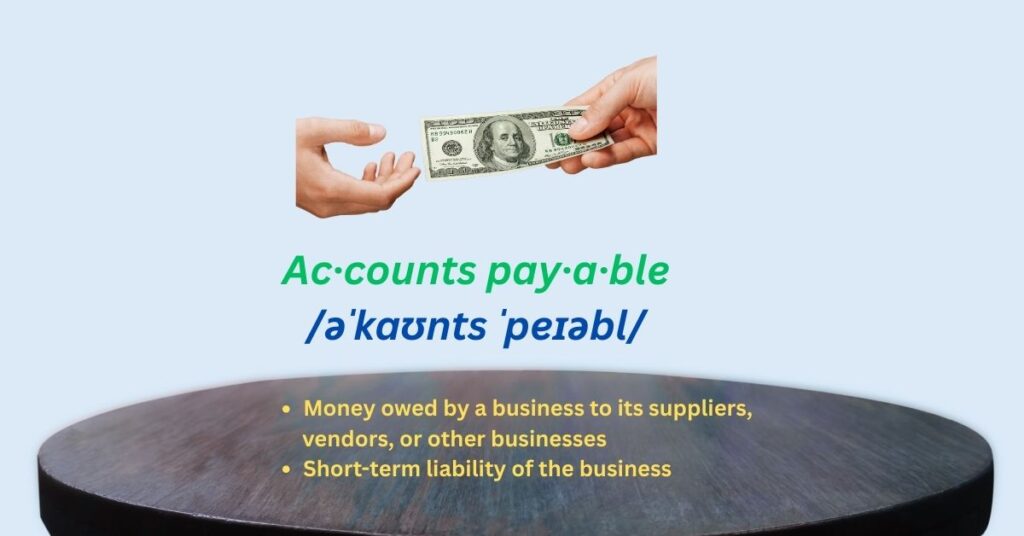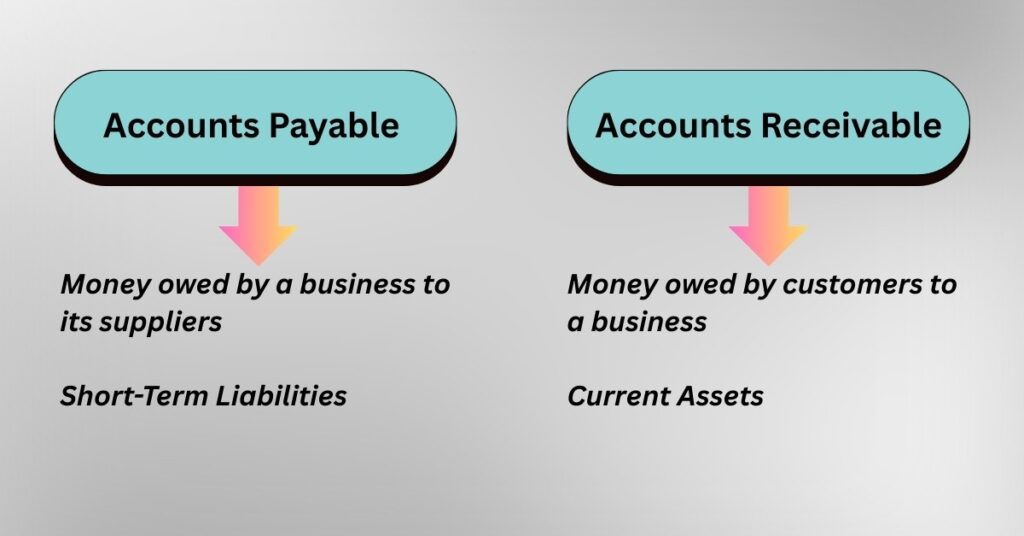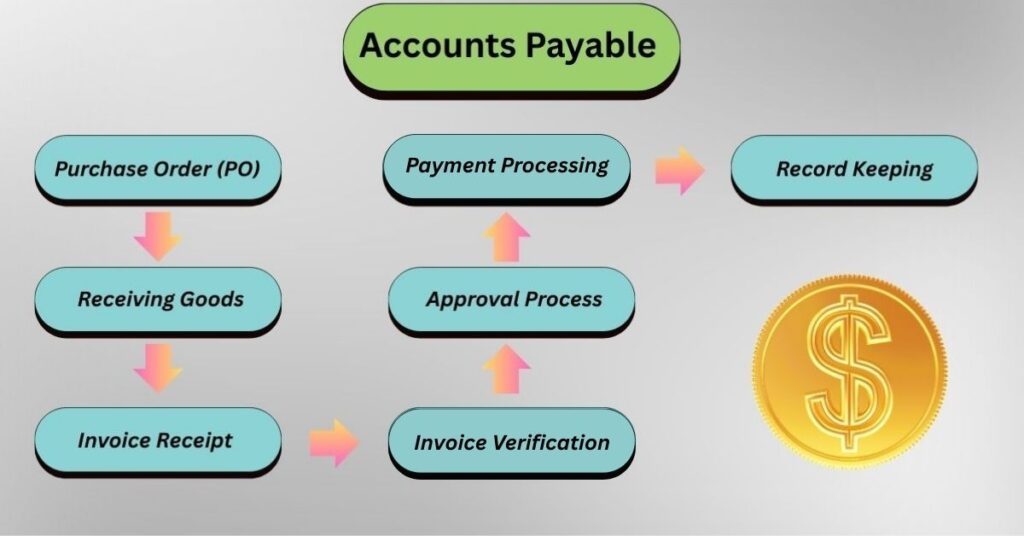What are Accounts Payable? Its Definition, Process, and Best Practices
If you’ve ever bought something for your business from any supplier and said, “I’ll pay you after some period or on a specific date in the future,” congratulations – you just created an account payable for your business with that supplier. When I first started in accounting, accounts payable seemed like a complicated concept that was created to confuse students. But here’s the thing – it’s actually one of the most interesting concepts in the field of business finance.
If you’re a new business owner getting your financial activities organized, or you have been in business for a while but couldn’t understand the nature and process of accounts payable, don’t worry- this guide is for you to explain the concepts of accounts payable with real-time examples for your easy understanding.
In the article, you will learn about what accounts payable are, their definition that makes sense, a step-wise process and recording, and real-time examples without any complications. Furthermore, you will be informed about the complete identification of mistakes that could cost you money while performing activities related to accounts payable and their management.
What are Accounts Payable?

Let’s start with the basics that tell us “Accounts payable is simply the amount of money that your business owes to other businesses. Think about your purchasing on credit from suppliers- every time you purchase goods and services without paying their invoices or payments, you create accounts payable for your business.
Here, we take a real-world analogy that makes it very clear. It’s like when you go to a restaurant with friends for dinner and someone picks up the check, saying, “Just pay me back later”. Here, you owe him money, and until you actually pay him back, you are liable to pay that money to him. Your business also works in the same way, when you purchased office supplies today, but the invoices say you can pay them in the next month. That unpaid amount is your accounts payable.
Now, here is a question in your mind: What exactly does accounts payable include? Accounts payable includes supplier invoices for inventory and office supplies purchase on credit, bills and utility payments due within a year, monthly rent, and any professional service or legal fees. Commonly, if another business provided some goods to your business and the payments for those goods have not yet been made to them, it’s accounts payable.
But here’s what it doesn’t include – and this trips people up all the time. Employee wages aren’t accounts payable (that’s payroll), loan payments to banks aren’t accounts payable (that’s debt service), and taxes owed to the government aren’t accounts payable (that’s tax liability).
Why does this distinction matter? Managing your accounts payable properly is crucial for cash flow management and maintaining good relationships with your suppliers. In my experience working with small businesses, I’ve seen companies thrive when they get this right and struggle when they don’t.
Let me give you some examples. Suppose you order $500 worth of office supplies and the invoice says “Net 30 days” – that means you have to pay that amount within 30 days from the invoice date, and that $500 is accounts payable. If you hire a marketing agency for a $2,000 monthly retainer and they bill you at the end of each month, that’s accounts payable. Even your monthly utility bills are accounts payable from the time you receive the bill until the date you pay it.
Accounts Payable vs Accounts Receivable

This is the point where people get confused – and honestly, I don’t blame them! The terminology is similar, but these concepts are opposite. Let me clear this up once and for all.
Accounts Payable (What You Owe): This is money going OUT of your business. These are bills and payments you need to pay – your business owes money to suppliers, vendors, and service providers.
Accounts Receivable (What Others Owe You): This is money coming INTO your business. These are invoices you’ve sent to customers, and they haven’t yet paid you– your customers owe you money.
Here are all-time favourite memory tricks: PAYable = you PAY (money going out), and RECEIVable = you RECEIVE (money coming in). Simple, is that, right?
Let me give you real examples that’ll stick with you for a longer period. Suppose you hired a web designer for $1,500 to recreate your website. Until you pay that designer, the $1,500 is accounts payable – money you owe. On the other hand, if you completed a consulting project for a client worth $3,000 but they haven’t paid you yet, that $3,000 is accounts receivable – money coming to you from your client.
Why does this distinction matter so much? Both accounts affect your cash flow, but in other ways. Your accounts payable represent cash you need to have available to pay bills. In contrast, your accounts receivable represent cash that should be coming in. Understanding both concepts helps you manage your cash flow, keep your financial statements accurate, and even has tax implications.
Accounts Payable Process: Step-by-Step

Now let’s talk about how this actually works in real life. Don’t worry – it’s simpler than you think! I’m going to walk you through the typical accounts payable process that most businesses follow.
Step 1: Purchase Order (PO)
First, you decide you need something for your business. It could be your computer breaks, or any other office equipment, so you contact a supplier to buy a new one. You create a purchase order, which is normally your way of saying “I want to buy this specific item at this specific price.” Not all small businesses use formal POs, but even a simple email confirming what you’re buying counts.
Step 2: Receiving Goods/Services
The supplier delivers what you ordered. Here’s a crucial point – always check that you got exactly what you paid for! I can’t tell you how many times I’ve seen businesses pay for things they never received or received in the wrong quantities or poor quality. Keep all delivery receipts and verify everything.
Step 3: Invoice Receipt
The supplier sends you a bill (invoice) for what they delivered. This is where accounts payable officially starts – the moment you receive that invoice, you now owe money (the money against the goods you have received). The invoice should match what you ordered and what you received.
Step 4: Invoice Verification
Here’s the critical part that most people skip, and it costs them money. You need to do what we call a “three-way match” – compare your purchase order with your delivery receipt and the invoice. Make sure the quantities match, the prices are correct, and the terms are what you agreed.
Step 5: Approval Process
Someone needs to approve the payments before they go out. Even in small businesses, you should have a system for this. Suppose it’s just you approving everything over $100, or maybe you have authorization limits where larger amounts need additional approval. The point is to have a system and stick to it.
Step 6: Payment Processing
Now you actually pay the bill. This could be by check, Automated Clearing House (ACH) transfer, credit card, or other payment methods. Here’s my advice: always pay on time to maintain good relationships with your suppliers and vendors, but don’t pay early unless there’s a meaningful discount for doing so.
Step 7: Record Keeping
Everything should be documented – seriously, everything. File the invoice, record the payments, and keep all supporting documentation that helps in financial reporting. Your future self (and your accountant) will thank you. Whether you use QuickBooks, Xero, or simple Excel spreadsheets, make sure everything is recorded properly.
The secret is to start simple with whatever tools you have, then upgrade your systems as your business grows.
Best Practices for Accounts Payable Management

After working with hundreds of businesses over the years, here are some practices that actually work in the real world.
Set Up a System Early
Don’t wait until you’re drowning in invoices to get organized. Whether it’s a simple filing system or accounting software, set up something from day one. I’ve seen businesses lose thousands of dollars because of poor organization of accounts payable – invoices get lost, payments are made twice, or discounts are missed due to non-availability of required invoices.
Take Advantage of Payment Terms
Understanding payment terms can literally save you money. When you see “2/10 net 30” on an invoice, it means you get a 2% discount if you pay within 10 days; otherwise, the full amount is due in 30 days. On a $10,000 invoice, that 2% discount saves you $200 – that’s free money! But sometimes it’s actually smarter business to wait and pay later to preserve your cash flow.
Build Strong Supplier Relationships
Pay your suppliers on time and communicate any issues early. Good relationships lead to better payment terms, priority service, and sometimes even better pricing. One of my clients saved 15% on their annual supply costs just by being a reliable, communicative customer.
Regular Review and Reconciliation
Check your accounts payable at least once a month. Look for duplicate payments, missed early payment discounts, or invoices that should have been paid already. Set calendar reminders for this job– never rely on your memory when money is involved.
Cash Flow Planning
Always know when your bills are due and make sure you have the cash to pay them. Use aging reports to see what’s due when, and schedule your payments accordingly. Never get caught in a situation where you don’t have cash to pay your bills – it damages relationships with your suppliers and can hurt your credibility.
Automate Where Possible
Technology can save you time and reduce errors. Set up recurring payments for regular expenses like rent or insurance, but always review automated payments to make sure they’re still accurate.
Common Accounts Payable Mistakes to Avoid

Let me share the mistakes I see over and over again. These are all completely preventable – learn from other people’s expensive lessons!
Losing Invoices
I can’t tell you how many times I’ve heard “we never received that invoice” when the supplier has proof they sent it. Set up an immediate filing system – whether it’s physical files or a digital folder – and use it religiously.
Paying Without Verification
Trust, but verify – every single invoice. I once worked with a client who was paying the same invoice twice because their supplier accidentally sent duplicates. Always verify invoices against your purchase orders and delivery receipts.
Missing Early Payment Discounts
This is literally leaving money on the table. If suppliers offer discounts for early payment and you have the cash flow to take advantage, do it. That 2% discount on a $5,000 invoice is $100 in savings.
No Approval Process
If anyone in your company can approve payments without oversight, you’re asking for trouble. Even small businesses need basic checks and balances to prevent errors and fraud.
Poor Cash Flow Planning
Paying bills without knowing your cash position is dangerous. I’ve seen businesses bounce checks because they didn’t plan their cash flow properly. Always know what’s going out and when.
Ignoring Vendor Relationships
Late payments damage more than your credit – they damage relationships with suppliers who could cut you off or put you on credit hold. Good vendors are hard to find, so treat them well.
Key Points
Let’s quickly recap the most important points – these are the things you absolutely need to remember:
- Definition: Accounts payable equals money your business owes to suppliers
- Process: Purchase Order → Receive → Invoice → Verify → Approve → Pay → Record
- Best Practice: Set up systems early and take advantage of payment terms
- Key Mistake: Never pay without verifying the invoice first
- Cash Flow: Always know when bills are due and plan your payments
- Relationships: Pay on time to maintain good supplier relationships
- Tools: Start simple (even Excel works), but upgrade as you grow
- Documentation: Keep records of everything – seriously, everything!
Remember, good accounts payable management isn’t just about paying bills on time. It’s about optimizing your cash flow, building strong business relationships, and setting up systems that will serve you as your business grows.
Conclusion

Managing accounts payable doesn’t have to be complicated or overwhelming. Start with the basics we covered today – understand what accounts payable is, set up a simple system for tracking what you owe, and follow the step-by-step process for handling invoices properly.
Don’t feel overwhelmed if you’re starting. Every successful business owner has had to learn this stuff, too, and most of us have made at least a few of these mistakes along the way. The key is to start somewhere and improve your systems over time.
Here’s what I want you to do today: Set up a simple system for tracking what you owe, even if it’s just an Excel spreadsheet. Your future self will thank you when tax time comes around and everything is organized.
From my experience, businesses that master accounts payable management early tend to be more successful overall. It’s not the most exciting part of running a business, but it’s definitely one of the most important. Get this right, and you’ll have better cash flow, stronger supplier relationships, and a lot less stress when it comes to managing your business finances.
Related Articles:
- 10 Fundamental Accounting Principles Every Business Owner Must Know
- Fixed Index Annuities: Your Way to Financial Confidence and Security
- QuickBooks Excellence: Transform Your Accounting Game with These Powerful Techniques
- Inbound vs. Outbound Marketing: The Great Debate That’s Reshaping Business Strategy
- How to Master Balance Sheet Analysis? Expert Guide with Examples
- Income Statement Formats: Complete 2025 Guide with Examples and Structure
- What Are Current Liabilities And Why They Matter For Financial Success
- Current Assets Essentials: Elevate Your Financial Management Game
- Remote Payroll Jobs: Your Gateway to Flexibility and Financial Growth
- Payroll Advance: Powerful Ways to Enhance Workplace Morale
- Powerful Mobile Marketing Strategies You Must Try
- Best Marketing Tools In An Advertising Plan
- Mastering Revenue Expenditure for Business Success
- Market Research And Its Importance: A Comprehensive Review
- What You Should Know? Notes Payable And Accounts Payable
- Digital Marketing And Strategies: A Comprehensive Review with Examples
- Are Annuities the Best Investment for a Bright Future? A Comprehensive Analysis
- Understanding Capital Expenditure: Definition, Significance, and Its Association in Financial Decision-Making
- Difference Between Accounting And Finance: A Proven Comprehensive Guide For Beginners
- Difference between Annuity due and Ordinary Annuity
- Essential Accounting Software for Small Enterprises
- 5 Best Software For Small Business Accounting







